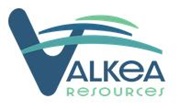Idaho Champion (ITKO.V): Gold Strengthens Baner Gold Discovery with Near-Surface Oxide Intercepts
Toronto, ON – March 9, 2021 – Idaho Champion Gold Mines Canada Inc. (CSE: ITKO; OTCQB: GLDRF; FSE: 1QB1)(“Idaho Champion” or the “Company“) is pleased to announce the assay results for the first two holes from the 2020 diamond core drilling program at its 100% controlled Baner Gold Project (“Baner”) in the producing Elk City Mining District, Elk City, Idaho.
Drilling Highlights:
- Extends the northerly trend from the 2018 discovery holes and identifies a second parallel mineralized structure
- ICGB2020-1 intersected 0.83 g/t gold (“Au”) over 11 metres from 19 metres down hole, including 4.60 g/t Au over 1 metre at the top of the interval
- ICGB2020-2 intersected 0.78 g/t Au over 26.50 metres from 168.86 metres depth
- including 1.07 g/t Au over 15.17 metres from 180.19 metres depth
- itself including 5.70 g/t Au over 0.84 metres from 180.19 metres depth
- Intercepts include shallow oxide-hosted gold and higher-grade quartz-sulfide vein-hosted gold mineralization at depth
“We are extremely motivated by the strong mineralization encountered in the first core holes from the 2020 program. These initial results show us that the mineralized zone identified in the 2018 drill program continues to the north and remains open,” commented President and CEO, Jonathan Buick. “The second hole was also important because it tested the depth extent of a quartz vein system identified through surface mapping and sampling. We believe the gold encountered in hole 2 is indicative of a new trend that aligns with the orientation of many historical workings in the Orogrande Shear Zone.”
Baner Drilling Technical Summary
The 2020 drill program consisted of eleven (11) diamond drill holes totaling 2,190 metres (Figure 1). Seven drill holes (ICGB2020-1 to -6, and -11) were placed centrally in the company’s claim block, targeting the northern extension of the mineralization discovered in Idaho Champion’s 2018 drill program (see press releases dated 23 October 2018 through 13 November 2018 on the Company’s website). Drill holes ICGB2020-7 and -8 were collared in the western area of the claim block, targeting strongly anomalous gold values in surface grab samples. Drill holes ICGB2020-9 and -10 are within the northeast corner of the claim block, targeting the historical producing BL Mine.
Table 1: Summary of Significant Assay Results from 2020 Diamond Drill Hole Program Holes 1 and 2

1Reported intervals are down-hole lengths and not true thickness. True thickness is estimated to be 75-90% of reported down-hole length. No gold assays are cut and intervals are calculated using a 0.1 g/t Au cutoff and a maximum of 1 meter allowable waste and a nominal threshold of significant grade-thickness at 5 gram-metres gold.
Drill hole ICGB2020-1 was drilled directly north of the 2018 drilling to determine if the mineralization discovered in 2018 continues along strike (Figures 1 and 2). It was drilled along an azimuth of 276° with a plunge of -45° to a depth of 299.31 metres. In addition to the reported intervals, ICGB2020-1 intersected significant mineralization at >0.1 g/t gold but below a 5 gram-metres threshold. These intervals include 20 individual core lengths from 1m to 9m with assays ranging from 0.1 to 0.7 g/t gold and 5 individual core lengths from 0.7m to 1.0m ranging from 1.3 to 2.2 g/t gold.
Drill hole ICGB2020-2 was drilled east of the main trend in order to target the downdip extent of mineralized quartz veins mapped at surface (Figures 1 and 3). It was directed along an azimuth of 70° with a plunge of -45° to a depth of 223.24 metres. In addition to the reported intervals, ICGB2020-1 intersected significant mineralization at >0.1 g/t gold but below a 5 gram-metres threshold. These intervals include 12 individual core lengths from 1m to 6m with assays ranging from 0.1 to 0.8 g/t gold and 2 individual core lengths of 1.0m ranging from 1.6 to 3.5 g/t gold.
Results from holes ICGB2020-1 and -2 extend the mineralized signature of the 2018 drill program, intersecting shallow oxide-hosted gold as well as high grade quartz-sulfide vein hosted gold mineralization at depth. The drill program in 2020 has served to further define the geometry of the Orogrande Shear Zone (OSZ) within the Idaho Champion claim block.
Mineralization is found to occur in two styles: shallow oxide mineralization and deeper quartz-sulfide veins and stringers (see Figures 2 and 3). Shallow oxide mineralization is dominantly hosted within strongly fractured and brecciated quartzite occurring as an oxide overprint on pre-existing quartz-sulfide vein mineralization. Deeper quartz-sulfide vein mineralization is localized by brittle structures which are commonly found at the contact between metamorphosed sedimentary rocks of the Belt Supergroup with quartz monzonite igneous dikes. The oxide-sulfide transition is usually associated with highly fractured rock, with a basal layer of rock fragments cemented by iron oxide stained clay.
CLICK HERE to read the full news release.




























